
A Female Yellow-Footed Green Pigeon (Treron phoenicoptera)
A Female Yellow-Footed Green Pigeon (Treron phoenicoptera)
Lucknow, India,18th century (circa 1775-1785)
Pen, ink, watercolour on paper, gum arabic
Provenance: Major General Claude Martin (1735-1800)
Niall Hobhouse Collection Sale, Christie's London May 22nd, 2008.
47cm high, 28cm wide
Stock no.: A5507
A Female Yellow-Footed Green Pigeon (Treron phoenicoptera)
A charming painting of the female Yellow-footed Green Pigeon. The Yellow-footed Green Pigeon is primarily olive-green in colour with ‘ashy grey above, uniformly bright yellow below, with a lilac patch on wing-shoulder and a conspicuous band across the blackish wings.’[i] The yellow tufted feathers on the legs make it stand out from other green pigeons, giving it its name. As visible from comparing this painting and that of the male (A5506), the sexes are nearly identical, with the females being slightly duller and a lighter purple patch. Also, the head of the male is slightly more rounded than that of the female. The young of this look similar and lack the purple shoulder patch.[ii]
They are found in the scrublands, forests, and cultivated area near towns and villages of southern Asia from Pakistan and India through to some sightings in Sri Lanka. They hang on banyan trees and peepul trees, feeding mainly on fruits and berries, especially peepul figs. Their colouration helps with camouflage amongst the trees. They are locally known as Hariyal in Hindi and Marathi, as well as Haroli in the latter. Hariyal means green, referring to the olive-green colour of the bird’s feathers.
These birds are almost exclusively arboreal, descending to the ground only to drink water. They typically stick to flocks of a few birds or very large groups of not just their own kind, but also other green pigeons, hornbills and other fruit-eating birds, to enjoy feasts of banyan and peepul figs. Similar to parakeets, they climb on branches, and often hang upside-down with great agility to eat the fruits.[iii]
Below the painting is an inscription in Persianised-Urdu saying Haral and the number 475 on the lower right. An inscription in ink in English reads Purple shouldered Pigeon. fe. B.C.
[i] Ali, Salim, and Ripley S. Dillon. Handbook of the Birds of India and Pakistan, Together with Those of Nepal, Sikkim, Bhutan and Ceylon. Vol. 3. 10 vols. Bombay: Oxford University Press, 1968, p. 108
[ii] Ibid.
[iii] Ibid.
[iv] Llewellyn-Jones, Rosie, ‘Claude Martin, An Enlightened Collector’, Hobhouse, Niall, The Lucknow Menagerie: Natural History Drawings from the Collection of Claude Martin (1735-1800), May 2001.
@AMIRMOHTASHEMI




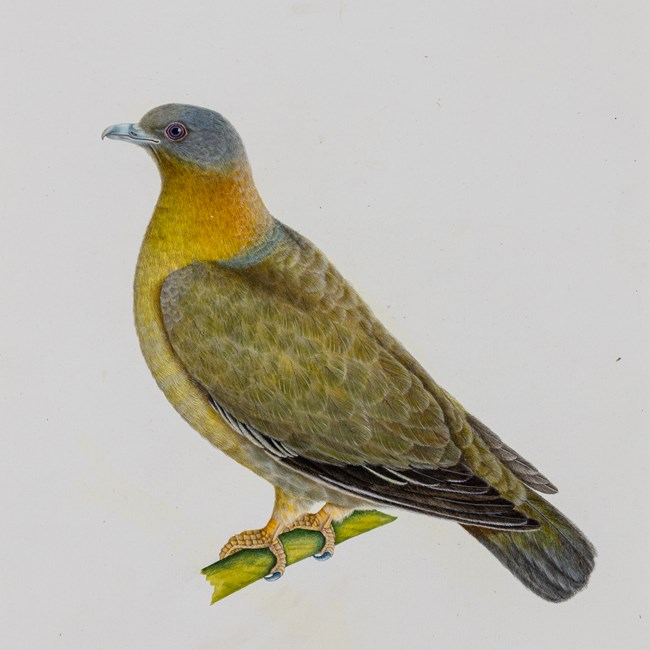
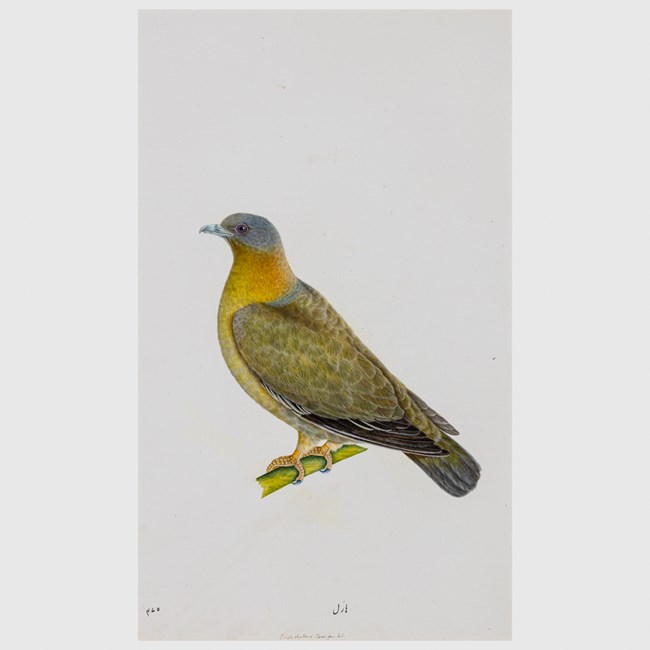
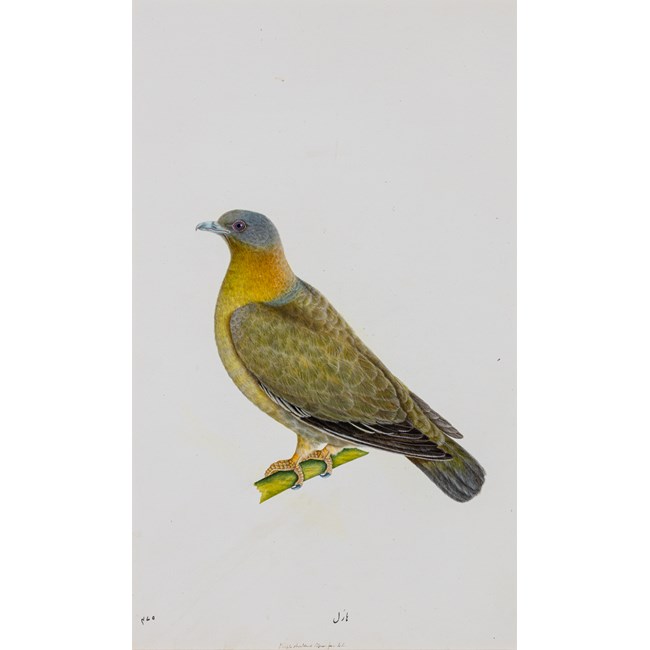
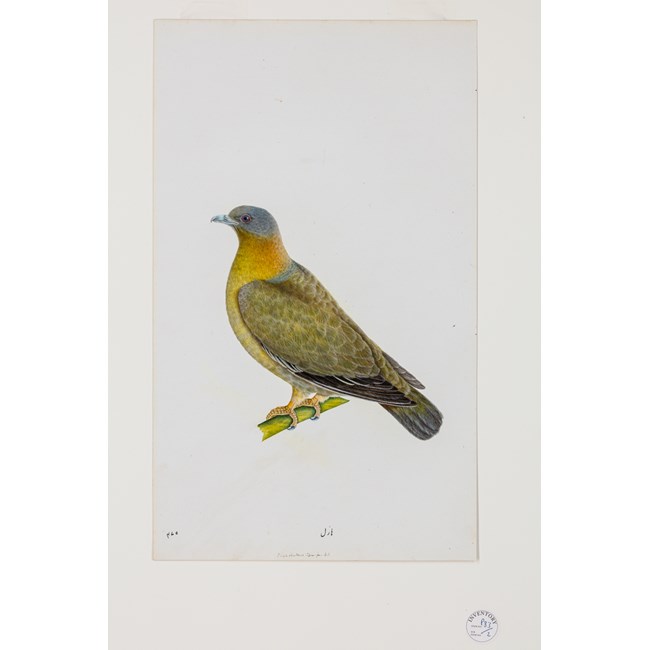
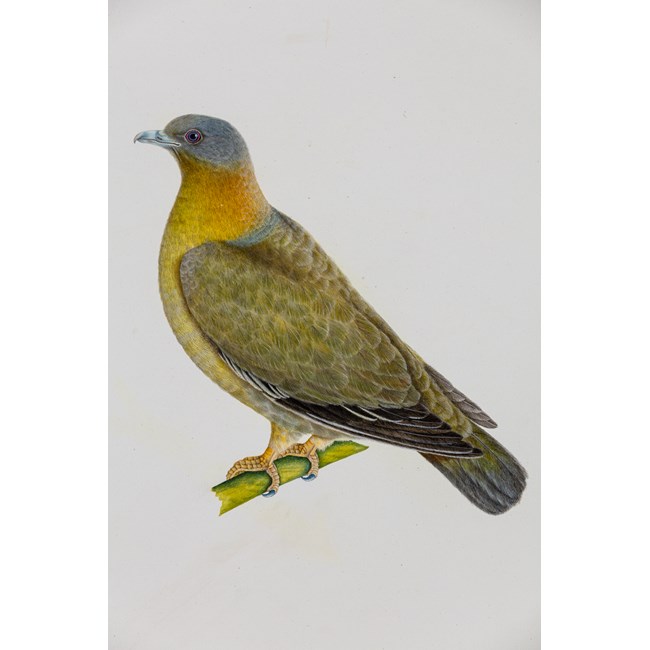
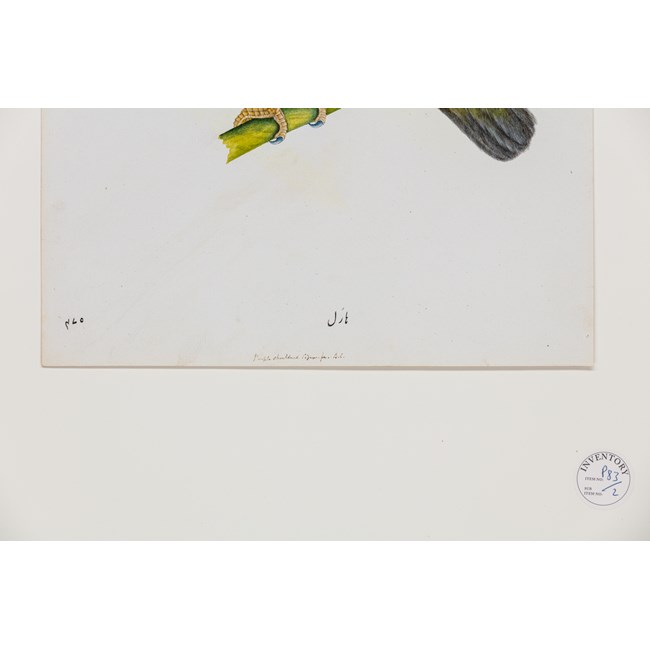


 instagram
instagram
